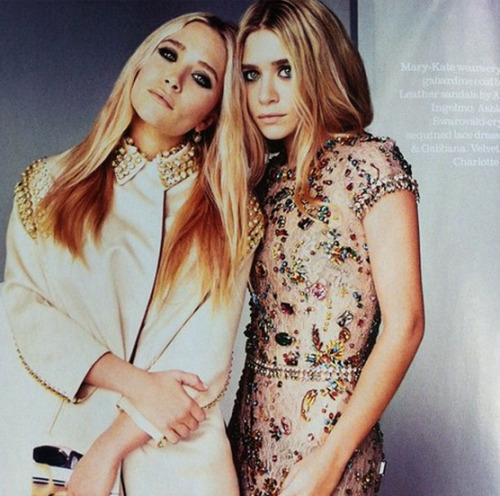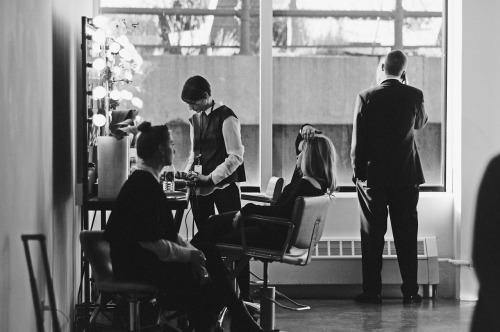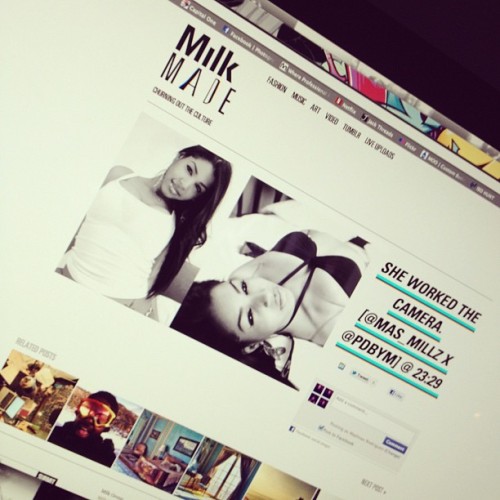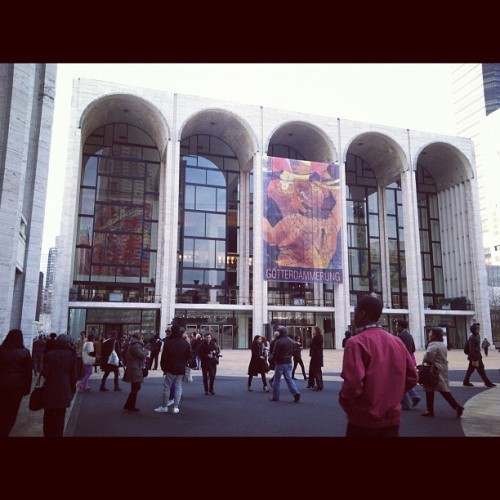Fashion’s Role as the Fifth Character in Sex and the City
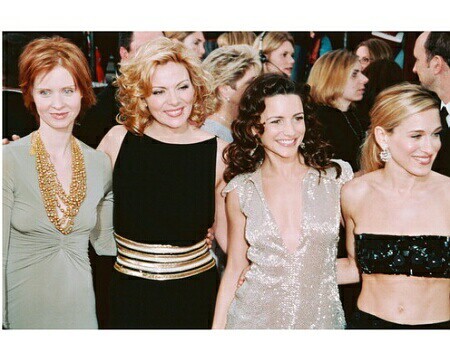
When Sex and the City premiered on HBO in 1998, it wasn’t the first show of its kind to utilize fashion as an unstated characterization of the women in the show. However, it was the first to use fashion as a symbol for the silent fifth character. Based on Candice Bushnell’s collection of essays, the books focus on the life of Carrie Bradshaw and the various relationship sagas of her four single friends. While most wouldn’t dare attempt the majority of the girl’s crazy antics, audiences across the world found themselves relating and aspiring to be each one of them. Though a few had come close, never before had their been a show where the fashion was meant to be analyzed and negotiated over as much as the characters in the show were. Patricia Field, costume designer of Sex and the City, demonstrated how fashion could dictate the personalities of the lovable quartet. Field showed men and women that fashion could signify things that words could simply not express.
We watched as fashion became a major component in lives of Carrie, the overdramatic writer, Miranda the cynical lawyer, Samantha the sex-crazed PR executive,and Charlotte the hopelessly romantic art curator. With a reported fifty outfits changes per episode over the show’s six year run, Field morphed the clothing to reflect the mental states of each character. The connotative level of understanding of the show reaching far beyond any show at the time. “The formula I use is an equidistant triangle,” explains Field. “One point of the triangle is the actor another is the character, and the third is the wardrobe. Each of these points caters to the script.”
Patricia Field, costume designer of Sex and the City
Carrie is known as the most relatable of the four girls, because of her smart relationship quips and extreme obsession with shoes. As a freelance writer she is emancipated from the inflexible policies of an office dress code, and her eccentric wardrobe often acts as a metaphor for her financial standing at the time. Without any constraints on her daily looks, we follow as she develops an eclectic style that many viewers came to identify with. “Carrie’s pastiche looks have an ambivalent influence on her audience,” agrees Stella Bruzzi author of Reading Sex and the City, “On the other hand, she made Manolo Blahnik shoes a household name on the other, the styles that have been explicitly marketed as series tie-ins are the inexpensive, easy to copy items.”
Carrie, who describes her addiction to shoes as a “substance abuse problem,” obsesses over her Manolo Blahniks to a point that borderlines on fetishization; a relatable trait that becomes a mainstay line of the show. Just like all of Carrie’s personal relationships on the show, the road to love between her and her Manolo’s was a bumpy one. In season three, Carrie experiences a quintessential New York moment- getting mugged. In “What Goes Around Comes Around,” Carrie not only gets striped of her wallet and jewelry, but she looses her cherished shoes as well. “You can take my Fendi baguette, you can take my ring and my watch” Carrie yells at her mugger in one of the shows most iconic scenes, “but don’t take my Manolo Blanks!” Season six again depicts Carrie loosing her treasured heels in “A Woman’s Right to Shoes.” This time her Manolo Blahnik D’Orsay stilettos are stolen at a party she attends where the hostess demanded that all guests remove their shoes before entering the apartment. In each situation, Carrie is willing to do anything to keep her Manolos from harm almost as if they were a friend she were loyally protecting.

One of her most familiar choices is the ‘Carrie’ necklace. Though it is worth next-to-nothing in monetary value, Carrie’s personal attachment to the accessory is worth more than the $55,000 replacement one of her boyfriends, Alexandr Petrovsky, offers to buy her. Though it is out of style at the time, Carrie is so intrinsically linked to that piece that it becomes somewhat of a symbol of her character. Purchased from a street fair while out shopping with her girls, it represents what she really values in life: the people she loves. When she moves to Paris in season six, she is left distraught to find that she has lost her necklace. The loss of the necklace symbolizes the loss of herself as she suppresses her desire to go home whilst loosing her individuality to a one-sided relationship. Finding the necklace caught in the lining of her Dior purse, she takes it as an omen for her return to New York. She burst into her signature “Carrie smile” and sprinting through the streets of Paris. While it wasn’t the necklace that made her Carrie, its loss served as the representation of her inward struggles and inability to find herself in a place that, no matter how hard she tried, could never feel like home.
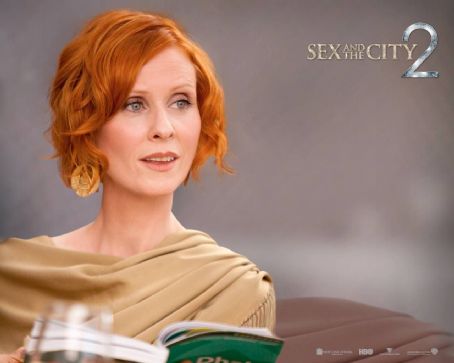
Completely different from Carrie, Miranda Hobb’s style is much like her personality: sardonic and abrasive. Her clothing reflects her constant struggle to compete for power within her predominately male work environment. A workaholic whose personal style reflects her professional aura, Miranda succumbs to the notion that she must masculinize herself if she wants to be taken seriously. After years of dressing in little other than pantsuits and the occasional pair of sweats, she even gets mistaken for lesbian in season two’s ‘Bay of Married Pigs.’ Her style does not improve until after she becomes a mother in season five, and furthermore when becomes a wife and moves to Brooklyn in season six. As a she comes into her own by filling a more traditional female role, she learns that a woman can be just as powerful in a dress as she can in trousers. Though Miranda thinks she is above fashion, her aversion to it only increases the impact when she learns to be happy with her position as depicted through her sartorial transformation.

Charlotte York, the eternal all-American optimist, is the most reserved of the four. Though never snobby, Charlotte’s style expresses her economic standing through upscale separates and fine jewelry. Her signature designer is Burberry, a brand typically associated with class, luxury, and tradition, all words Charlotte would find extremely complimenting. Her old-fashioned notions of romance and marriage are signified by her retro, full-skirt silhouettes, high-cut Peter Pan collars, and strands of pearls.
Samantha is easily the most outrageous of all four women, both in her relationships and sartorial decisions. A relentless cougar by nature, she is clad in a wardrobe full of super-short dresses, plunging neck-lines and exaggerated accessories. Samantha is the most sure of who she is, and never looses sight of that in her life and in her style, despite being thrown a slew of unfortunate circumstances. “While the other characters change quite substantially by season five, Samantha’s look remains constant,” Field points out. When Samantha is diagnosed with breast cancer in season six, she transforms the ordeal into an opportunity to wear outre wigs and head scarves. Once again using fashion to interpret her emotions, Samantha doesn’t seem to fully comprehend the severity of her diagnosis until she is unable to find a wig to match her outfit.
The phenomenal importance of appearance as used as a tool for character development contributed to the astronomical success of the show. The eccentricities of Carrie’s various outfits symbolize her exuberant personality. Charlotte’s sharp silhouettes gradually become more relaxed as she grows weary of the possibility finding her own happily ever after. Samantha’s promiscuous ensembles convey her salacious nature and bulletproof confidence. Miranda’s masculine style shows a debauched view of a man’s world, and her transformation to a more feminine silhouette showed that she is finally satisfied with her place in life. The women of Sex and the City are diverse in many ways, but fashion acts as the common denominator linking them together and allowing them to communicate with their viewers through the fifth main character: the clothing.


















